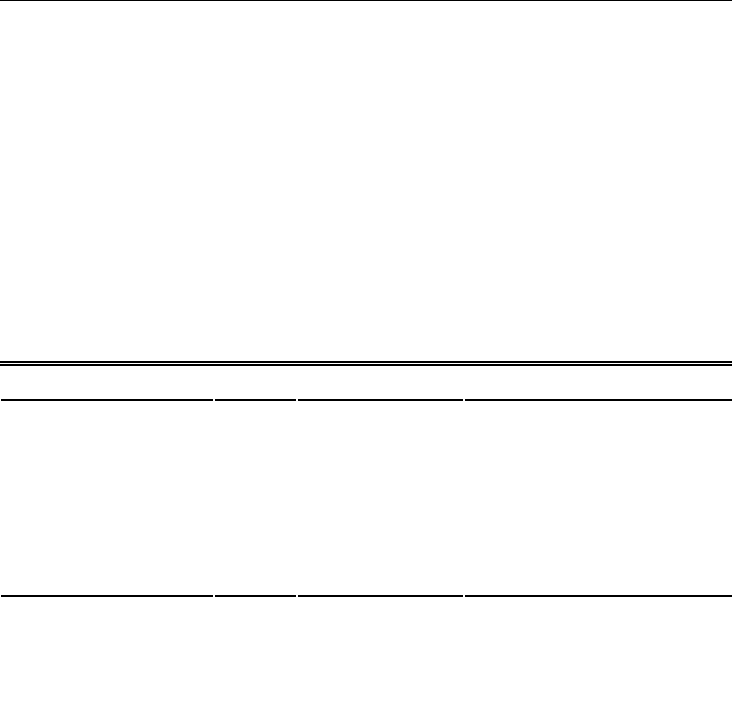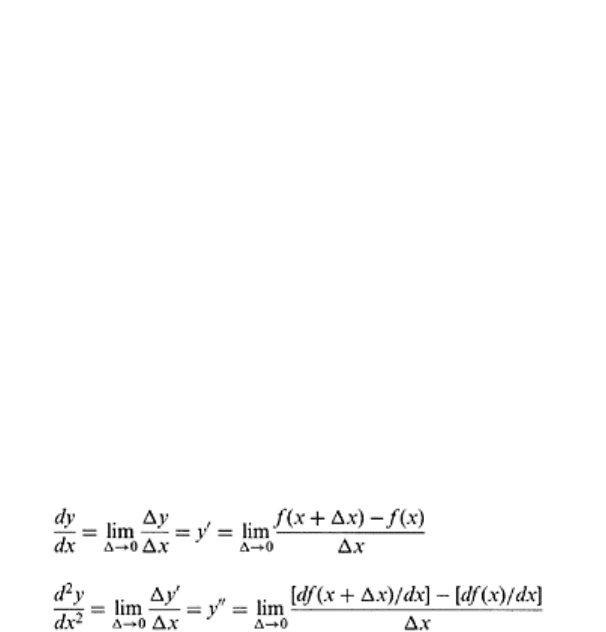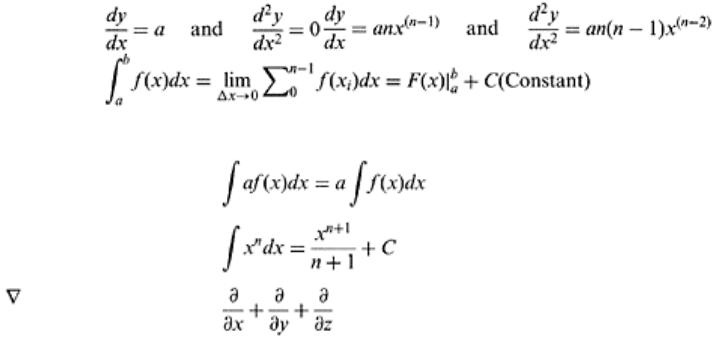Lal R., Shukla M.K. Principles of Soil Physics
Подождите немного. Документ загружается.


Pb(NO
3
)
2
103.5 88.4 760
ZnSO
4
·7H
2
O 20 90 15.6
Na
2
CO
3
·10H
2
O 18.5 92 14.6
NaBrO
4
20 92 16.0
K
3
HPO
4
20 92 16.0
NH
4
H
3
PO
4
30 92.9 29.3
NH
4
H
3
PO
4
25 93 21.9
Na
2
SO
4
·10H
2
O 20 93 16.1
NH
4
H
3
PO
4
20 93.1 16.2
ZnSO
4
·7H
2
O 5 94.7 6.10
Na
3
SO
3
·7H
2
O 20 95 16.5
Solid phase t°C % humidity Aq. tension mm Hg
Na
3
HPO
4
·12H
2
O 20 95 16.5
NaF 100 96.6 734
Pb(NO
3
)
2
20 98 17.0
CuSO
4
·5H
2
O 20 98 17.0
T1NO
3
100.3 98.7 759
T1C1 100.1 99.7 761
For concentrations of sulfuric acid solution refer to tables relating density to percent composition.
Appendix O 634

CONSTANT HUMIDITY WITH SULFURIC ACID SOLUTIONS
The relative humidity an pressure of aqueous vapor of air in equilibrium conditions above
aqueous solutions of sulfuric acid are given below.
Density of
acid solution
Relative
humidity
Vapor
pressure at
20° C
Density of
acid solution
Relative
humidity
Vapor
pressure at
20° C
1.00 100.0 17.4 1.30 58.3 10.1
1.05 97.5 17.0 1.35 47.2 8.3
1.10 93.9 16.3 1.40 37.1 6.5
1.15 88.8 15.4 1.50 18.8 3.3
1.20 80.5 14.0 1.60 8.5 1.5
1.25 70.4 12.2 1.70 3.2 0.6
For concentrations of sulfuric acid solution refer to tables relating density to percent composition.
Appendix O 635

Appendix P
Some Common Algebraic Functions
Linear y=ax+b
Quadratic y=a+bx+cx
2
Polynomial y=a
1
+a
2
x+a
3
x
2
+a
4
x
3
+…+a
n
x
n
Exponential y=ae
bx
Power y=ax
b
Logarithmic y=a+b(ln x)=a+b2.3031og x (In has a base of e and log has 10)
Sine y=a sin bx (a sine curve has zeros at the beginning, middle and end of a cycle. It
reaches its maximum and minimum values at the ¼ and ¾ mark, respectively)
Cosine y=a cos bx (a cosine graph begins and end at its maximum point. In the middle, it is
at its minimum value, and has zeros at the ¼ and ¾ mark)
For y=f(x)
(i) 1st
derivative
(ii) 2nd
derivative

(iii) For
y=ax+b
(iv) For
y=ax
n
Integration
(i) For
y=f(x)
(ii) For y=af(x)
(iii) For y=x
n
Arithmetic Progression x, (x+a), (x+2a), (x+3a),.........(e.g. 1, 3, 5, 7, 9, 11,.........)
Geometric Progression ax, a
2
x, a
3
x, a
4
x, a
5
x,....... (e.g. 1,2,4, 8, 16, 32,)
Appendix P 637

Index
Absolute pressure (P), 335
Absorbed water, 288
Absorption, 9
calculating amount of heat needed for, 72
Active pool, 78, 79
Activity ratio (AR), 240
Adhesion, 232
Adhesive forces, 260–261
Adiabiatic process, 522
Adsorption, 9, 468
batch experiments for, 500
equation for, 491
at equilibrium, 493
Freundlich model of, 485
Langmuir model of, 485
opposite of, 484
of polymers on clay surfaces, 138
of soil moisture content, 347
Adsorption isotherms
defined, 50
defining shape of, 50
schematic of, 485
Aeration, 9
governed by soil water temperature, 527
indices for measuring, 129
management of, 586–588
measurement of, 576–578, 579
Aeration porosity, 563
Aerobic condition of soil, 567
Aggregate
continuity of pores within. See Porosity
defined, 97
hydrophobicity of, 115
ideal breaking of, 204
integrity of, 150
measuring stability of, 124

measuring strength of, 124
properties of, 114–115
schematic of, 381
strength of, 115
weakest state of, 180
Aggregate analysis
expression of results of, 126, 127, 128
indices to express results of, 128
Aggregate coalescence, 175
Aggregated (silt+clay) index, 129
Aggregate disruptions, 174
Aggregate geometry models, 507
Aggregate hierarchy model, 107
Aggregate strength method, 127
Aggregation, 65, 96, 99–100
aggregate hierarchy model, 107
biotic factors in, 118
bonding agents for, 110–114
calcium-linkage theory, 101, 102
clay-domain theory, 104, 105
clay-water structure, 101–102
correlation with organic matter, 113–114
distinction between flocculation and, 108–109
edge-surface proximity concept, 102, 103
effect of added organic matter on, 120–121
effect of decline in, 165
effect of drying and wetting on, 116–117
effect of fertility management on, 137
effect of freezing on, 117–118
effect of no-till farming on, 433
effect of soil conditioners on, 138
effect of soil tillage on, 118–120
effect of thawing on, 118
effect of tillage on, 137
effect of water management on, 137
effect of weather on, 169
Emerson’s model, 102–104
factors affecting, 115–121
from farming systems, 136–137
and frozen solids, 631
laboratory methods for assessing, 123–124
methods for improving, 178
methods of assessment for, 121–126
microaggregate theory, 105–107
organic bond theory, 104
pedological methods for assessing, 122–123
POM nucleus model, 107–108
quasi-crystal theory, 104–105
Russell’s theory of crumb formation, 100–101
stages of, 107
and structural formation, 108–114
Index 639

and structural resiliency, 132–133
Agricultural lands, management of soil compaction in, 217–221
Agricultural machinery
and soil compaction, 210–212
and soil compaction prevention, 218–219, 220
Agricultural productivity
and fertilizer, 7
importance of soil physics to, 6–9
Agricultural sustainability, 6–9
Agriculture
application of soil strength in, 197
importance of soil solids to, 80, 81
importance of understanding solute transport to, 465–466
relevance of soil compaction to, 206
Agroecology, 5
Agronomic capability, 4, 5
Agronomic operations, 82, 83
Agronomic yield, 85
Air entry point, 342
Airflow in soil, 569–571
Air permeability, 578–586
measurement methods for, 581–586
Air porosity (f
a
), 560
range of, 25
Air pressure potential, 326
Air ratio (a), 25
Air temperature, global mean surface, 559–560
Albedo, 524–525, 533
Algebraic functions, 689–690
Alkali soils, 644
Alumino-silicates, 35
Ammonia (NH
3
), 557
Anabolic reactions, 535
Anaerobic condition
of soil, 567
toxic substances produced during, 567
Anaerobiosis, 16
Analogous laws, 540
Anion exchange capacity (AEC), 55
Anion exclusion, 477, 478, 484
defined, 486
equilibrium model of, 486, 488
two-region model of, 491–492
Anisotropic soil, 372
Anisotropy, 372
Annual cycle, the, 529–530
Apparent diffusion coefficient, 502
Apparent dispersion coefficient (D), 502–503
Applied liquid, 474
Index 640

Arable land area, global shrinkage of, 8
Archimedes’ principle, 27
Arhennius equation, 526–527
Atmospheric gases
concentration of, 560
pressure of, 269
Atterberg constants, 232–233
applications of, 243–246
applied to soil shrinkage, 246
cohesion limit, 238
factors affecting, 240–241
lower plastic limit, 238
measurement of, 241–243
shrinkage limit, 237–238
soil indices based on, 238–240
sticky limit, 238
upper limit of viscous flow, 238
upper plastic limit, 238, 239
Available water capacity (AWC), 293–297, 611
calculating, 296
Avogadro’s law, 560
Backscatter technique, 215
BC equation, 396–397, 398
BET method, 51
Bimetallic, 518
development of temperature scales and, 516–517
electric resistance, 518
liquid-in-glass, 517–518
remote sensing thermometer, 519–520
thermocouple, 519
thermoelectric, 518–519
Binding agents
persistent, 113–114
temporary, 111
transient, 111
types of, 109–110, 111
Bingham model, 191
Bingham plastic fluids, 266
Biochemical reactions, under anaerobic conditions, 567
Biological crusts, 166
Biological nitrogen fixation, 558
Biomass productivity, 9
Biopores, 633
Biota, effect on soil structure, 118
Bivalent cations, 64
Blackbody, 523
Black plastic mulch, 456
Blue water, 255
Boltzmann constant, 63
Index 641

Boltzmann transform method, 393–394
Bond dipole moment, 57
Bonding agents, 110–114
Bonding mechanisms, 107
Bonding pores, 154
Bottleneck effect, 348
Boundary condition, 495
at exit, 495
for pulse input, 495
for step-type input, 496
Boussinesq equation, 212
Breakthrough curves (BTC)
defined, 474
interpretations of, 476–479
solute input in 474–476
Brownian movement, 41, 467
Buffering capacity, 33
Bulk density (ρ
b
), 20, 608–609
Bulk modulus, 195
Burger model, 191
Bypass flow, 632–633
Calcium-linkage theory, 101, 102
Caloric, 521
Canopy surfaces, albedo for, 524
Capacitance method, 306–307
Capillarity, 261–264
Capillary bundle concept, 356–357
Capillary depression, 263
Capillary potential, 325–326
Capillary rise, 263
Carbon dioxide (CO
2
), 557
release into atmosphere, 16
Casagrande test, 242
Catabolic reactions, 535
Cation exchange capacity (CEC), 55
Celsius (°C), 515
conversion from one scale to another, 516
Cementing agents
soil structure index based on, 131
types of, 109–110
Channeling, 632–633
Charge distribution, 171
Chemical crusts, 166
Chemical reactions
under anaerobic conditions, 567
endothermic, 536
exothermic, 536
and heat evolution, 535–536
Childs and Collis-George method, 390
Index 642

Chisel plow, 588
Clausius-Clapayron equation, 268, 411
Clay
adsorption of polymers on, 138
charge properties of, 59–60
evaluating transport from surface to subsoil, 278–279
field moisture capacity (FC) of, 290
heat of wetting, 71
hydraulic gradients in, 360–361
minerals in. See Clay minerals
relation with soil properties and processed, 82
secondary minerals found in, 53
size fractions of, 35–37
and soil plasticity, 241
sources of charge in, 53–55
stability of suspension of, 63–66
strength of, 200
Clay-domain-theory, 104, 105
Clay minerals
classification of, 54
electrical double layer and zeta potential of, 60–63
primary bonds in, 55–58
secondary bonds of, 58–59
silicate, 53
specific surface area of, 60, 72
structural units in, 52–54
Clay particles
swelling and shrinkage of, 66–68
theory for bonding of, 100–101
water adsorption on, 69–71
Clay ratio, 129
Clay-water structure, 101–102
Clear plastic mulch, 455
Coagulation, 63
Coefficient of linear extensibility (COLE), 249–250
Cohesion, 232
Cohesion limit, 238
Cohesive forces, 237
Collision efficiency, 63–64
Colloidal hydration, 67
Colloidal suspension, 64–65
Column displacement experiments, 494
Combined nondimensional transport equations, 496, 497–499
Compaction. See Soil compaction
Compensation method, 519
Compression, 208
Condensation, 533–534, 535
Conduction, 533
Cone penetrometer, 215–217
Conservation tillage, 458
Conservative solutes, 466
Index 643
